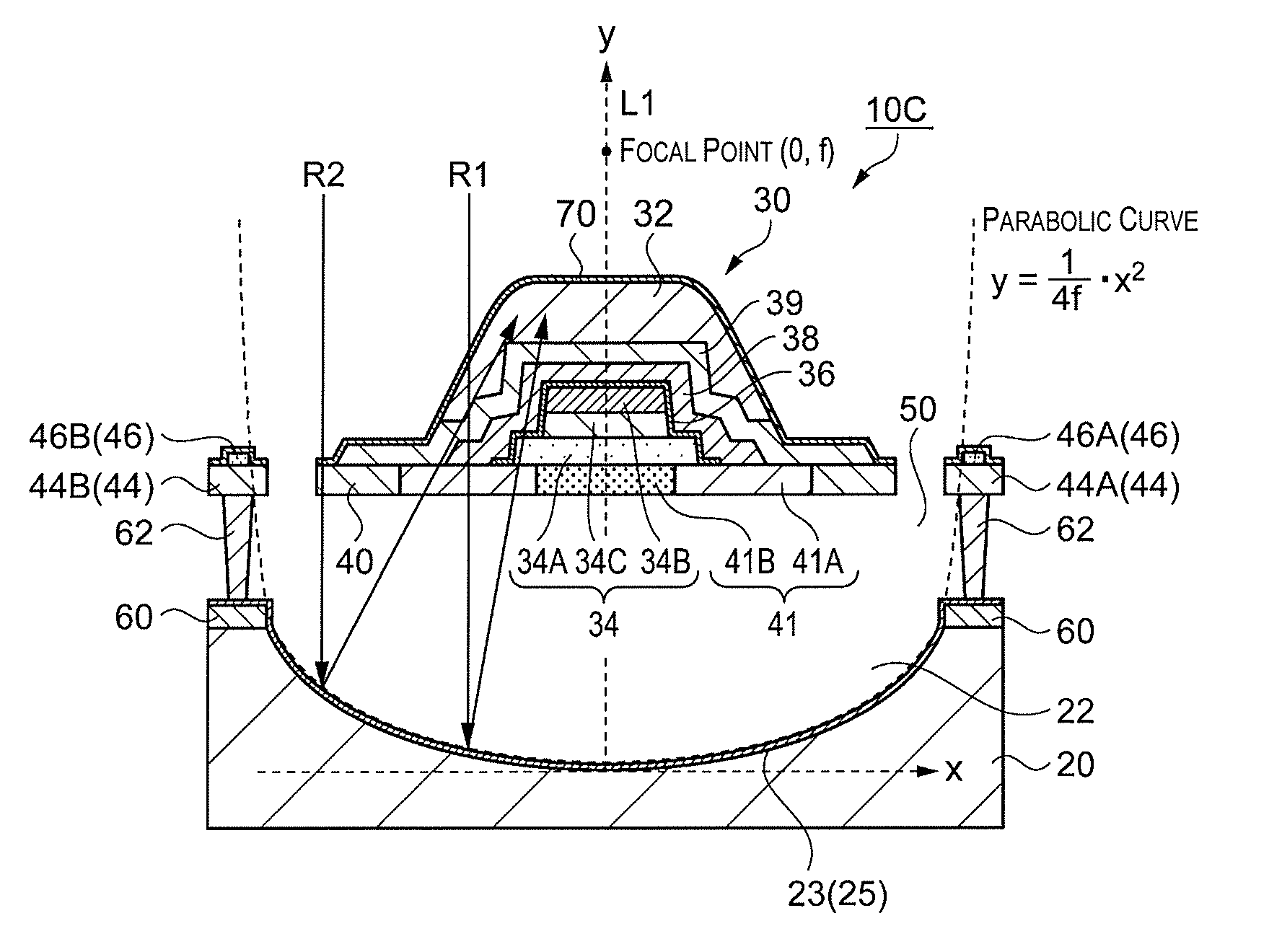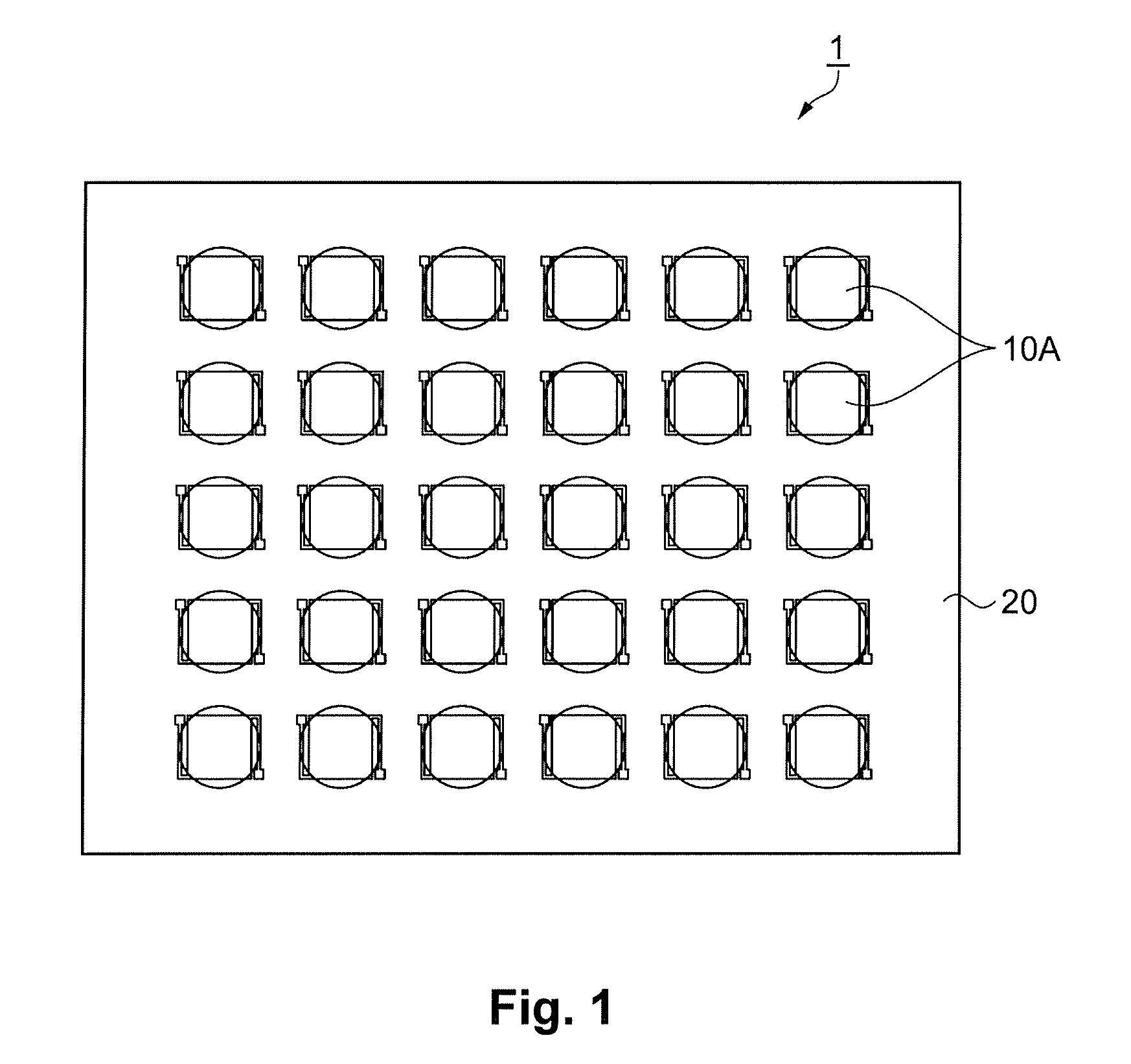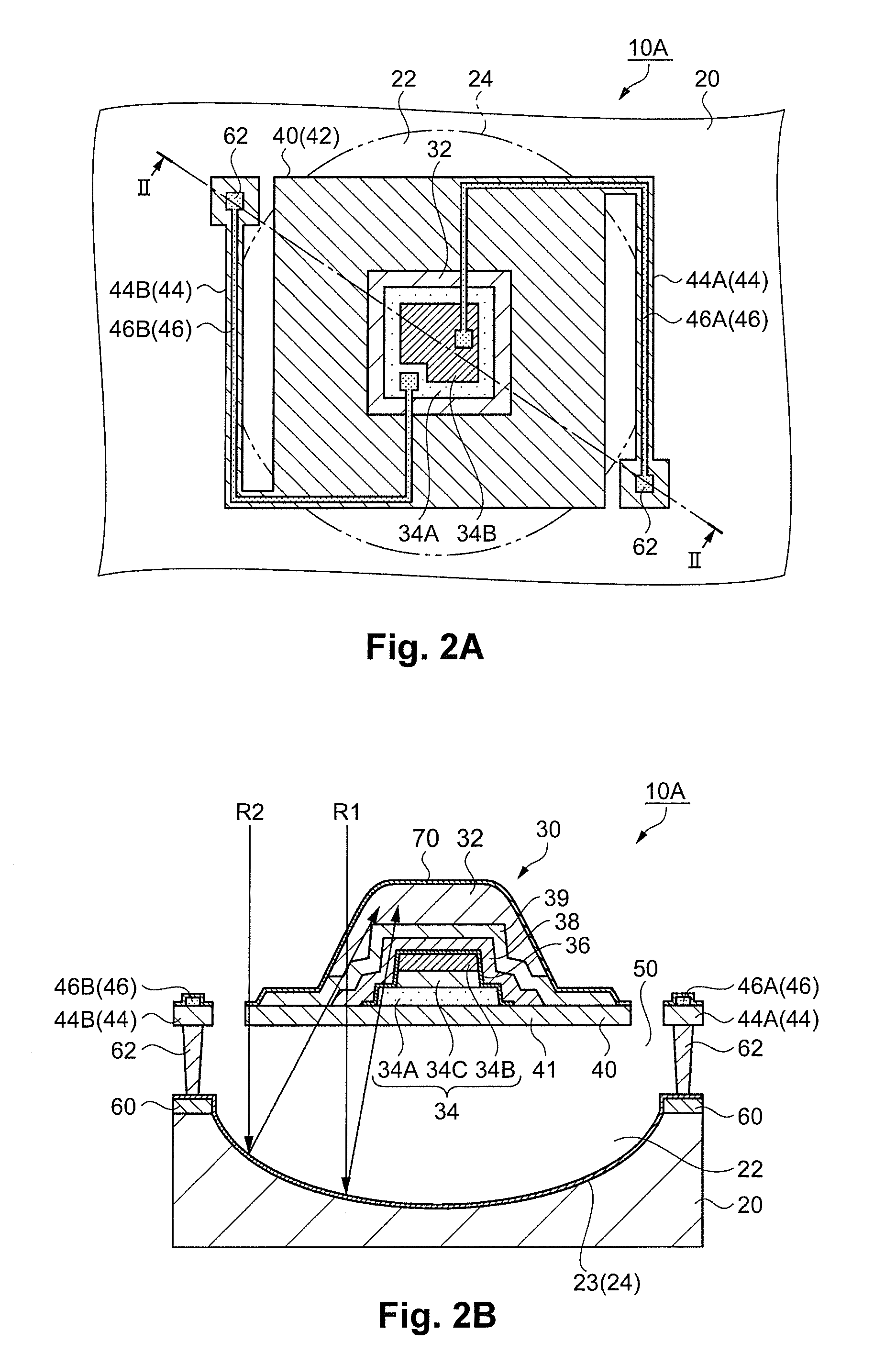Thermal detector, thermal detection device, and electronic instrument
a thermal detection and detector technology, applied in the direction of optical radiation measurement, semiconductor devices, instruments, etc., can solve the problems of difficult to reduce element size and increase detail, and the effect of infrared light absorbing film is not high, and it is difficult to completely cancel out the interaction between the first reflected infrared light and the second reflected infrared ligh
- Summary
- Abstract
- Description
- Claims
- Application Information
AI Technical Summary
Benefits of technology
Problems solved by technology
Method used
Image
Examples
embodiment 1
[0038]FIG. 1 is a schematic plan view showing an infrared detection device. As shown in FIG. 1, the infrared light detection device 1 has a substrate 20. Thermal detectors 10A are disposed as individual cells in a two-dimensional grid-shaped matrix on the substrate 20. Each cell denotes the section in which a thermal detector 10A has been disposed. The thermal detectors 10A detect infrared light and thus the infrared detection device 1 can detect an infrared light distribution. The infrared detection device 1 can thus provide a thermal (light) distribution image.
[0039]FIG. 2A is a schematic plan view that shows an infrared detector. FIG. 2B is a schematic sectional view of the infrared detector taken along the line II-II in FIG. 2A. First, the general configuration will be described for the thermal detector 10A that is used as the infrared detector in Embodiment 1.
[0040]As shown in FIGS. 2A and 2B, the thermal detector 10A has a second recess part 22 that is used as the recess part,...
embodiment 2
[0079]A characteristic thermal detector according to a second embodiment is described below using FIGS. 5 and 6. In this embodiment, the same designations are used for similar members or regions as in Embodiment 1, and detailed descriptions are not provided.
[0080]With this embodiment, in contrast to Embodiment 1, the light-absorbing part 41 has doped regions in which impurities have been dispersed into polycrystalline silicon and undoped regions that contain no impurities.
[0081]FIG. 5A is a schematic plan view of the thermal detector as viewed from the support member 40 towards the substrate 20. FIG. 5B is a schematic sectional view of the thermal detector sectioned along line III-III in FIG. 5A. The thermal detector 10B shows a single cell. First, the general structure of the thermal detector 10B that serves as the infrared detector will be described.
[0082]As shown in FIG. 5, the doped regions 41A and the undoped regions 41B in the light-absorbing part 41 are in a patterned layout....
embodiment 3
[0093]Next, a characteristic thermal detector according to Embodiment 3 will be described with reference to FIGS. 7 to 10. In this embodiment, the same designations are used for similar members or regions as in Embodiment 1, and detailed descriptions are not provided.
[0094]This embodiment differs from Embodiment 1 insofar as the shape of the curved light-reflecting surface 24 is different.
[0095]FIG. 7 is a schematic sectional view showing the infrared detector, and FIG. 8 is a diagram detailing a parabolic surface. In FIG. 7, the bottom surface 23 of the second recess part 22 in the thermal detector 10C is a parabolic surface, not a spherical surface. As shown in FIG. 8A, given a reference line L2 (y=−f) that is parallel to the X axis and perpendicular to the Y axis and a focal point F (y=f) on the Y-axis, the parabolic curve that forms the parabolic surface is given as the locus of points P for which points Q exist on the reference line L2 such that the distance PQ is equivalent to...
PUM
 Login to View More
Login to View More Abstract
Description
Claims
Application Information
 Login to View More
Login to View More - R&D
- Intellectual Property
- Life Sciences
- Materials
- Tech Scout
- Unparalleled Data Quality
- Higher Quality Content
- 60% Fewer Hallucinations
Browse by: Latest US Patents, China's latest patents, Technical Efficacy Thesaurus, Application Domain, Technology Topic, Popular Technical Reports.
© 2025 PatSnap. All rights reserved.Legal|Privacy policy|Modern Slavery Act Transparency Statement|Sitemap|About US| Contact US: help@patsnap.com



